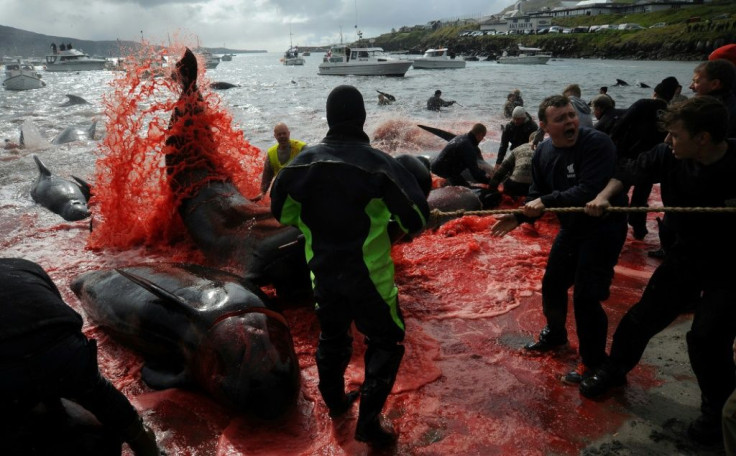Outcry As Faroe Islands Slaughter 1,400 Dolphins In A Day
The government of the Faroe Islands, an autonomous Danish territory, faced an outcry on Tuesday over the culling of more than 1,400 white-sided dolphins in a day in what was said to be the single biggest hunt in the northern archipelago.
"There is no doubt that the Faroese whale hunts are a dramatic sight to people unfamiliar to the hunts and slaughter of mammals," a government spokesman told AFP.
"The hunts are, nevertheless, well organised and fully regulated," he said.
Traditionally, the North Atlantic islands -- which have a population of around 50,000 people -- hunt pilot whales and not dolphins, the spokesman said.
"There are usually a few of them in the 'grind', but we normally don't kill such a large number," said a local television journalist, Hallur av Rana.

The "grindadrap" is a practice whereby the hunters first surround the whales with a wide semi-circle of fishing boats and then drive them into a bay to be beached and slaughtered.
"It looks quite extreme and it took some time to kill them all, while it's usually pretty quick," av Rana said.
Photos showing the bloodied corpses of more than 1,000 Atlantic white-sided dolphins on the beach sparked outrage on social media.
According to av Rana, although some 53 percent of the islands' population are opposed to the "grind", there no plans to abolish the practice. The authorities insist it is a sustainable way of hunting.
Sea Shepherd, a charity that campaigns against the hunting of whales and dolphins, described it as a "barbaric practice".
According to local estimates, there are around 100,000 pilot whales in the waters around the Faroe Islands and around 600 were killed last year.
© Copyright AFP 2024. All rights reserved.





















